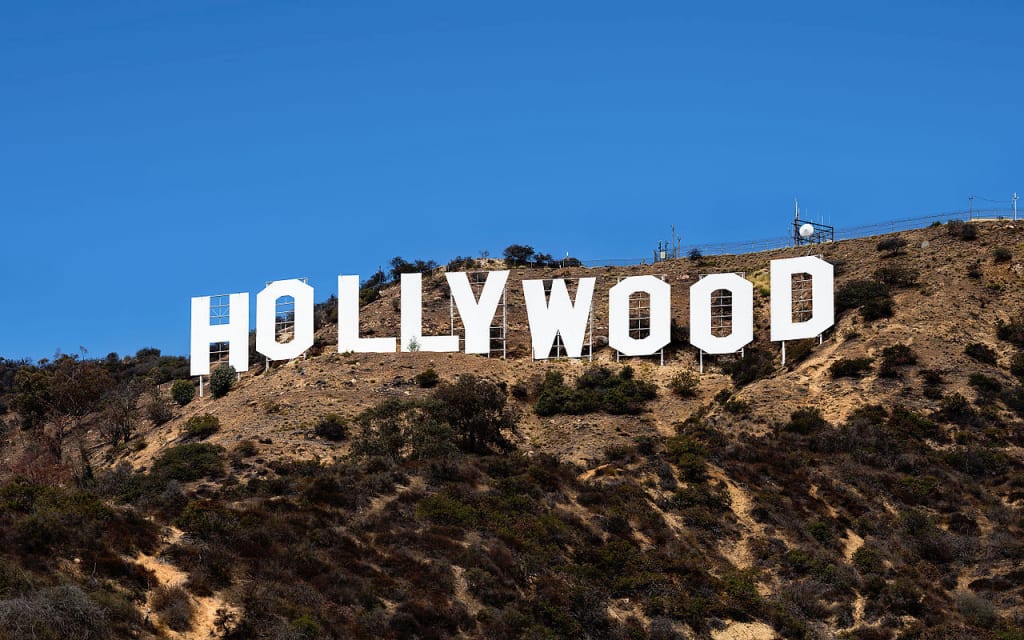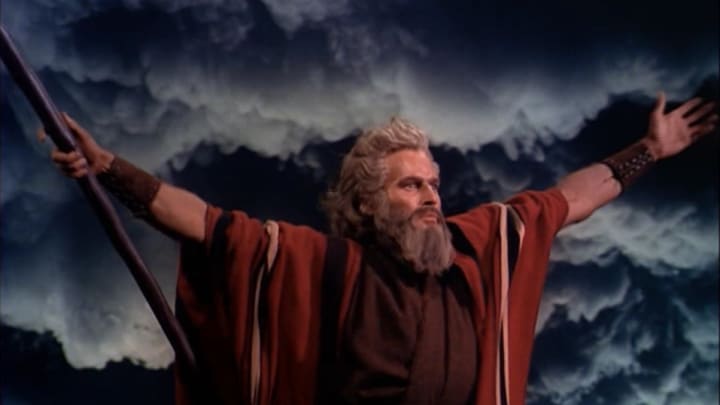Hollywood Vs. Television
Pretty much yesterday's Hollywood vs. Netflix

For decades, going to the movies was a great way Americans consumed media. They would see cartoons, get their news, and see silent film. In 1927 and on, films would have sound and narratives became much more powerful.
However, as a result of suburbanization, a desire for cheaper entertainment, and creating the bond of co-viewing in one's own living room, Hollywood struggled to remain on top, and sought two major solutions to battle television.

Courtesy of Wikipedia
What was America like after WWII?
After WWII, there was a different environment for production, reception and distribution for American pop culture. The entertainment industry as a whole was very prosperous after the Second World War from 1945 into the 1960s.
There was a baby boom, as this generation emerged in the 1950s and 1960s. People were getting married much younger than before since everyone was returning home from war, and babies were born.
The United States was becoming more suburbanized, as Americans wanted to move out of the cities and buy their own homes. The single family housing started, and millions of new homes were built.
Suburbanization was also accelerated in part by the federal government sponsoring construction of highways under the Eisenhower administration.
Suburban families developed a lifestyle that revolved around television, which was the up-and-coming preferred mode of entertainment.
TV was free, and there were three networks you could tune into---NBC, ABC and CBS.
Even though at first televisions were a major expense, they eventually became more commonplace. The best part was that once you paid for it, everything you watched on it was free, and in the comfort of your own home.
This made Hollywood worry.

Photo by Wikipedia
The movie industry, on the other hand, was under sustained attack.
Starting back before WWII, in the 1930s, the Hollywood studios were violating anti-trust laws. This issue was not touched upon since WWII postponed any actions against them.
In 1948, the Supreme Court settled the Paramount Case (named after the studio, who was the main target with for the regulations they wanted to set forth). All of the Hollywood Studios were violating the Sherman Anti-Trust Act.
Their major activity was block-booking movie theaters. In efforts to guarantee B-movies audiences, theaters would show all the movies a studio was churning out. This made sure everything would be profitable, no matter how much of a flop a film was.
As a result of studios owning theaters, they were engaging in what was considered illegal trade. After the Paramount Case, Hollywood had to sell the theaters they acquired from the 1930s on.
Ultimately, the Paramount Decision meant that every movie needed to be marketed on its own. It was the end of B movies, the end of the studio production system, the end of hiring actors on contract. It was the end of regulated output of films with that steady cashflow for the studios.
This also meant the rise of independent studios.
In 1949, 10% of all films were made by independent studios. Ten years later, nearly half were being made this way.
Hollywood understood it needed new ways to stay prosperous. They lost control over actors with contracts. Actors eventually became more important than the studio system itself.
For example, in 1950, Lou Osserman negotiated a multi-picture deal for Jimmy Stewart. The contract was no exclusive, as he could make fimfs for other studios. Instead of a salary, he got a percentage of movie profits. He made at least three films at Universal. Stewart also collaborated with Alfred Hitchcock and worked under Paramount, MGM and Columbia.
Between regulations, the competition of television, and finding new ways to really turn a profit, Hollywood needed to distinguish themselves.
This was a big challenge for them in the 1940s through the 1960s. They tried using certain gimmicks to attract attention such as cinemascope, vista-vision, smellavision (where audiences could smell what they saw onscreen). There was even experimentation with 3D movies (polaroid 3D glasses were made for it. This wouldn't be picked up again for another 50 years).
So, Hollywood adopted two new different approaches to grow their audience back.

Courtesy of Wikipedia
The first solution: the creation of the "Blockbuster hit"
Hail, Caesardoes this well, as Hollywood is in danger and felt the need to make big-budget films in order to wow audiences. Television (at the time at least, since Netflix is growing), did not have the same budget as what Hollywood had. In Hail, Caesar! big budget films were made with large ballroom scenes, orchestra pieces, and aesthetics like those in Ben Hur became the major trend.
With television, the content was very homogeneous. Since televisions were accessible to anyone in the home, there was no way certain content could be aired there.
Hollywood thought that by developing Blockbusters, they would grab an audience unsatisfied with television. These films were large, expensive, star-studded, and filled with special effects. The content was no match for the small screen in your living room, and could also never be made by the TV stations at the time.
Cecil B. DeMille's The Ten Commandments is a great example of this. It is incredibly famous for the Red Sea scene. It is considered aesthetically, culturally and historically significant by the National Film Registry.
This type of film is still made, as films like E.T. and Indiana Jones and many others are made in the tradition of the special effect.
Movie musicals also became major films, as the big music and dance numbers and large sets drew filmgoers to theaters.
One major factor directors and writers had to keep in mind, however, was the idea that if a blockbuster bombs, the studio also bombs.

Courtesy of Warner Bros.
The second solution: niche film audiences
The audience that Hollywood decided to gear their films towards was teenagers. This was a smart market move, as teenagers wanted to get out of the house, or go on dates. Hence, the drive-in movie becoming popular. Teens would ask Mom and Dad if they could borrow the car, because they had a date at the movies and couldn't be late.
These teen movies dealt with rebellion as a theme and used Rock N Roll music as a soundtrack.
Films like Rebel Without a Cause starring James Dean and Natalie Wood illustrated the angst many teens felt, since times were changing and parents didn't understand what it meant to be a teen at that time.
These movies explored subjects that TV was afraid to. Sometimes they would include language that would be frowned upon to use on TV. By attracting another audience than Mom and Dad with the white picket fence, they pushed the limits. Independent filmmakers went on to challenge the Hayes Code.
By 1956, movies were allowed to have drug use, abortion, prostitution, and kidnapping as topics. Films like The Man With The Golden Arm, which was heavy in heroin use was more accepted than ever before on the silver screen.

Courtesy of United Artists
The Midnight Cowboy and the shift of content
In 1969, The Midnight Cowboy gave the ratings system a run for its money. The R-Rated film didn't accept its rating, so it was automatically given the rating of X.
The way films were rated was by the Motion Picture Association of America were much different than they are today, as content was chosen much more conservatively for their ratings.
After being rated X, the publicity team took advantage of this and advertised with an appropriate air of mystery. Their brilliant campaign was "what you heard about Midnight Cowboy is true!"
The film went onto win the Oscar for "Best Picture of its Year," making it the only film rated X to EVER win an Oscar. This meant that the Hayes Code is dead.
Overtime, film made its peace with television. A sort of compromise was television buying older movies to air. This was also the start of the TV/Movie quasi-audience.
Economics, technology, and legal decisions of the 1940s brought the dramatic changes of film and TV. It changed the culture content and tendencies of what viewers sought from then up to today.
About the Creator
Marina Caitlin Watts
Marina loves Frank Sinatra and hates decaf coffee. The native New Yorker and Cornell grad knows every word to "Ferris Bueller's Day Off" and thinks Shakespeare is cool. If you need her, she's waiting for Godot. Twitter: @marina_caitlin






Comments
There are no comments for this story
Be the first to respond and start the conversation.